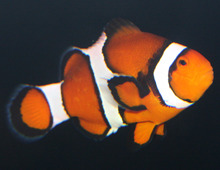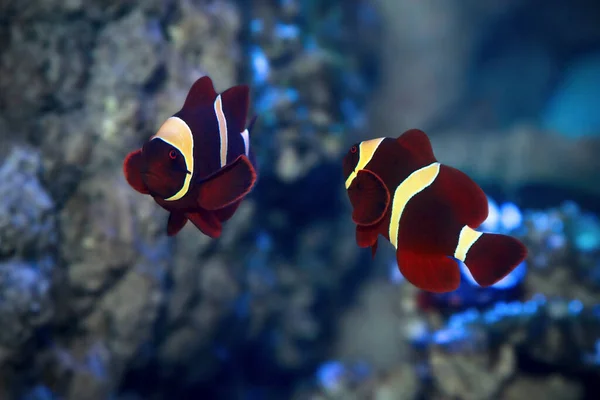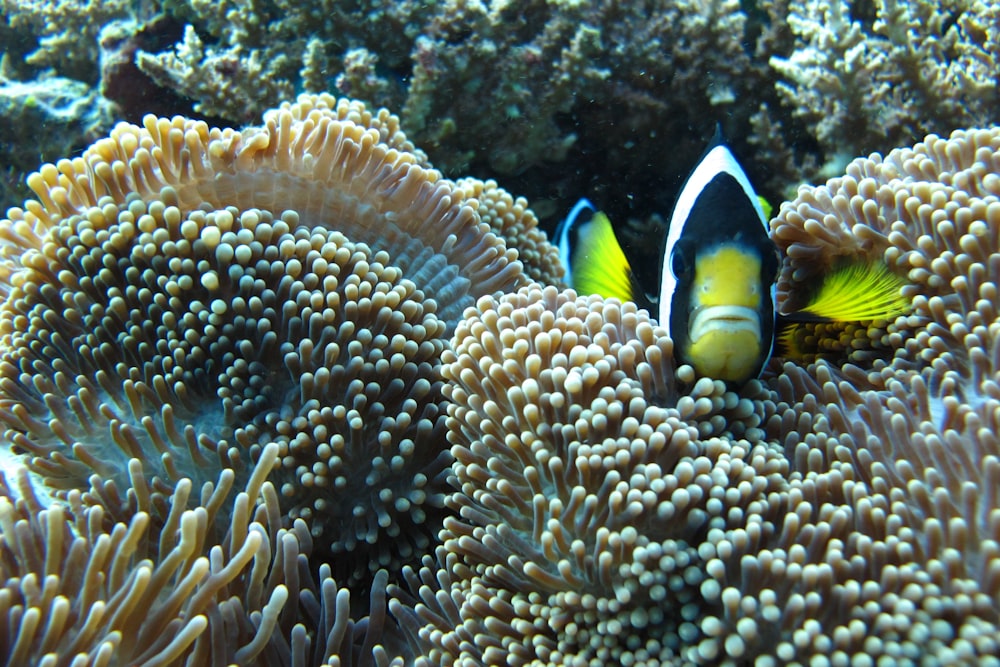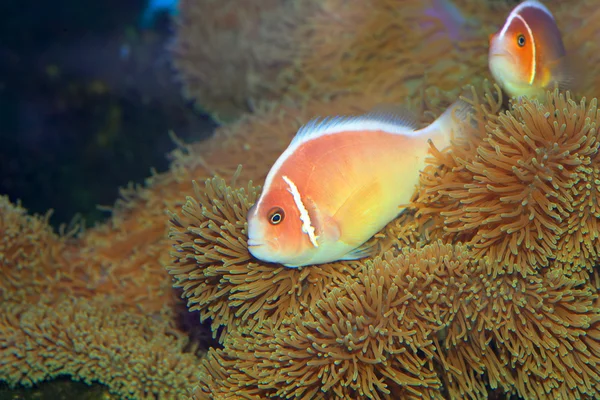With the success of the film “Finding Nemo,” the admiration for clownfish grew significantly. This lovely fish is simple to keep, gentle, and tranquil. They are, nevertheless, among the most expensive saltwater fish you can find on the market. Obviously, you’re already curious about the cost of these little angels.
These colorful tiny fish give your aquarium a much-required splash of color and aesthetics. Clownfish are a welcome relief in the aquarium for lots of fish enthusiasts. The various species of clownfish render it nearly hard to choose the ideal fish.
A range of these saltwater fish breeds makes excellent aquarium additions. Their price varies according to the fish you choose for your aquarium.
How Much Does A Clownfish Cost?
The cost of a clownfish initially comes off modest and then skyrockets, far greater than the cost of their conventional freshwater counterparts. You can buy a Common Clownfish for about $10 to $25. The white and orange-stripped clownfish are generally these.
If you want a specific color and variety of clownfish, the cost would be around $60 to $70. If you are looking to get the uncommon and special ones, be prepared to pay over $100 for each fish.
Then there are the other expenses, like aquarium costs, nourishment, and fish care, to consider. The rarer the fish, the costlier its price.
Best Clownfish Retailers
We’ve compiled a list of some of the best places to buy clownfish to make it easy for you.
| Shop | Price Bracket |
|---|---|
| That Pet Place | Between $15 and $60 |
| Saltwater Fish | Between $20 and $293 |
| Vivid Aquariums | Between $20 and $50 |
| PetCo Store | Between $17 and $189 |
| LiveAquaria | Between $14 and $110 |
Different Clownfish Varieties Have Different Prices
Retail prices for different clownfish varieties are priced differently. The clownfish with orange and white striped orange clownfish is by far the commonest clownfish variety. It’s most likely the clownfish variety you’d encounter on any website if you look up clownfish online.
Ocellaris Clown is the name for this clownfish species with orange and white stripes. If you pay close attention, you’ll see that several other species fit into the clownfish category, but their appearance differs.
Clownfish are perhaps the most appealing fish on the marketplace, and while the majority of them are raised in confinement, they can live in seawater with tuna, marlin, and a host of other marine fishes. As regards upkeep, they’ve got a few substantial demands in terms of lifestyle and food, rendering it easy for newbies to succeed at the venture.
Newbies are prone to making a variety of blunders when it comes to raising a fish. Having fewer finicky fish would allow children to understand the aquatic realm better, allowing them to care for them more readily. There are thirty other clownfish species you can choose from in the fish world.
They’re calm animals with a range of conditions that their caregiver must meet if they must be happy. They normally live for six years; providing a healthier habitat for them will allow them to live longer. They are available for purchase in both online and neighborhood retailers.
Clownfish Varieties vs. Cost
| Clownfish Variety | Cost |
|---|---|
| Orange Storm Clownfish | $100-$140 |
| Common Clownfish | $50-$75 |
| Cinnamon Clownfish | $50-$75 |
| Black Clownfish | $65-$90 |
| Clarkii Clownfish | $75-$125 |
| Tomato Clownfish | $15-$35 |
| Saddleback Clownfish | $40-$60 |
| Pink Skunk Clownfish | $30-$50 |
| Maroon Clownfish | $10-$25 |
Clownfish Cost By Type
The cost of a clownfish is mostly determined by its variety. And, as previously said, there are several kinds of the thirty clownfish varieties, each with its price bracket. The following is a checklist of different clownfish varieties that you may purchase from a retail website or a neighborhood dealer.
Ocellaris Clownfish (Cost: $10-$25)
Ocellaris Clownfish is a bright little fish that appears to be from the Percula family. But, they’re not of the Percula family. Because of their likeness, they’re oftentimes referred to as false Percula Clownfish.

The sole method to tell the difference between them is recognizing that a false Percula’s white stripes have a faint black edge. They range in price from ten to twenty-five dollars.
Percula Clownfish (Cost: $10-$25)

The Percula Clownfish includes two of the commonest clownfish species seen in aquariums. There are two types of clownfish: Picasso and common.
These clownfish are usually bred captive and come in a variety of color variants. Percula Complex costs between $10 and $25.
Maroon Clownfish (Cost: $50-$75)

Clownfish with significant band markings belong to this category. The Gold Striped Maroon Clownfish and the Premnas Biaculeatus are the sole two clownfish obtainable to enthusiasts in the Maroon Clownfish class.
Since they are the most beautiful and uncommon form of clownfish, Maroon Clownfish are costlier than other varieties of fish. You can budget between $50 and $75 if you are looking to buy a Maroon Clownfish.
Clarkii Complex (Cost: $15-$35)

The Clarkii Complex is a collection of eleven clownfish with distinctive band patterns, easy to handle, and significantly bigger than some other clownfish varieties.
These attractive clownfish breeds reach a maximum size of 5.1″ and are one of the most popular clownfish kinds among fishkeepers. The Clarkii Complex costs between $15 and $35.
Saddleback Complex (Cost: $30-$50)

Fishes that belong to this class have a distinct appearance from most clownfish species. Since they’re among the most peculiar and uncommon fish types, they’re quite appreciated amongst aquarists.
They’re, however, one of the most difficult clownfish to raise and are only recommended for expert fishkeepers. They come in three different species that may be kept in aquariums. The Saddleback Complex costs between $30 and $50.
Tomato Clownfish (Cost: $75-$125)

This class has just roughly two clownfish species. They’ve got only one white marking at the rear side of their eye, unlike other clownfish varieties, and no additional markings. They’re, however, deeper in appearance and the hardiest of the clownfish types.
After the Skunk and Clarkii Complexes, the Tomato Complex is the 3rd largest clownfish type. While it is true that they aren’t the classiest clownfish types out there, they are, of course, the most ideal for people who are just starting. The Tomato Complex costs between $75 and $125.
Skunk Complex (Cost: $15-$35)

The Skunk Complex is a 2-species clownfish with a distinct appearance. They’ve got a lovely white skunk-like stripe spanning the whole of their rear.
This shy clownfish type is the tiniest of the clownfish clan, and their tiny size allows them to suit small-sized aquariums. The Skunk Complex costs between $15- $35.
Factors Affecting Clownfish Cost
Unlike how you’d do with a freshwater fish, most clownfish species must be properly cared for their lives to be extended. A clownfish is a peaceful fish; however, it’ll become hostile if its needs are not satisfied.
Like freshwater fish, they normally choose to live in areas where the current is weak. Also, clownfish are the ideal fish for people just starting since they do not need a large tank to raise them in; clownfish typically grow to about four inches in length, making them ideal for modest aquariums.
Set-Up Costs
Clownfish can only be found in warm waters. They’re mostly seen in coral reefs in the Pacific and Indian Oceans. They dislike rising temperatures, which explains their dislike of shallow waters since they have relatively high temperatures.
Clownfish have a difficult time swimming. Being near coral reefs provides them with nutrient-rich water. Your aquarium must recreate all of this to help them feel at ease inside.
Clownfish Tank Prices
To be ideal, there is no need to spend a lot of money to acquire a tank. When contrasted with other fish, they have a higher need for light. You’ll need eight to ten gallons of water to fill the tank.
A tiny fish tank costs between twenty-five and thirty dollars. It’ll be optimum for them to breed if their tank is filled with ten water gallons or less. Clownfish species aren’t renowned for their swimming abilities; therefore, they don’t require a lot of room to participate in all of the activities.
They usually swim in a narrow region, vertically and horizontally. The demand for a smaller enclosure is one aspect that is kept concealed. A tiny tank is more difficult to handle than its large and medium counterparts.
Smaller tanks accumulate toxins more quickly, resulting in a compromised quality of water that could prove harmful to the fish. This emphasizes the importance of the tank’s everyday hygienic needs for the clownfish’s survival.
Clownfish Food Costs
Clownfish can eat a broad variety of foods, and you can obtain granular food to satisfy their nutritional needs. Using a combination of live and frozen foods can keep them in great shape for a long time.
It is preferable to feed them only once each day. Don’t get scared of overfeeding them if you want to include more species in your saltwater aquarium. Clownfish will survive if they are fed each day.
Extreme benevolence doesn’t accelerate their growth and developmental rate. The cost of an ounce of fish flakes or food pellets is about two dollars. You may choose to feed them costly fish meals, but they’ll not be required for their survival.
They will be quite delighted if you get some granular fish food and combine it with a frozen meal. Summarily, clownfish food is quite inexpensive, making it a good option for novices.
The Cost Of Healthcare
You’ll need immediate access to meds to adequately take care of their health. Normally, the meds for clownfish cost less than twenty dollars. You may implement several steps to ensure that their habitat is in good living conditions.
If food gets trapped in crevices such as rocks while being dropped, it’ll degrade the water quality and damage the fish. Introducing clean-up animals like starfish, crabs, and snails to your saltwater aquarium will assist in solving the problem of poor water quality. These will further drive clownfish costs down.
Severe Disease
One of the commonest illnesses observed in seawater fish and also in a typical freshwater fish is Booklynella Hostiles. The clownfish, however, is the Booklynella’s primary focus. If this occurs, you must act quickly to resolve the issue before it extends to other aquarium species.
Malachite green, when combined with copper, will effectively repress this disease. When mixed with methanol, formaldehyde gas dissolves effortlessly inside water and acts as a stabilizing agent, allowing for successful disease therapy.
Booklynella Hostiles can infect clownfish if another fish is placed inside your aquarium without going through the proper procedures.
Conclusion
Clownfish may be expensive, based on the breed and color you decide to opt for. Because the body and fins will become filled with bands of various colors, they could be especially stunning.
Assorted clownfish are available in the marketplace for those looking to add a unique touch to their fish tank. A typical clownfish would cost less than twenty dollars, but if you’d like a more diversified color variety, you’ll need to invest over fifty dollars.
Image Credit:
- Dallas World Aquarium

